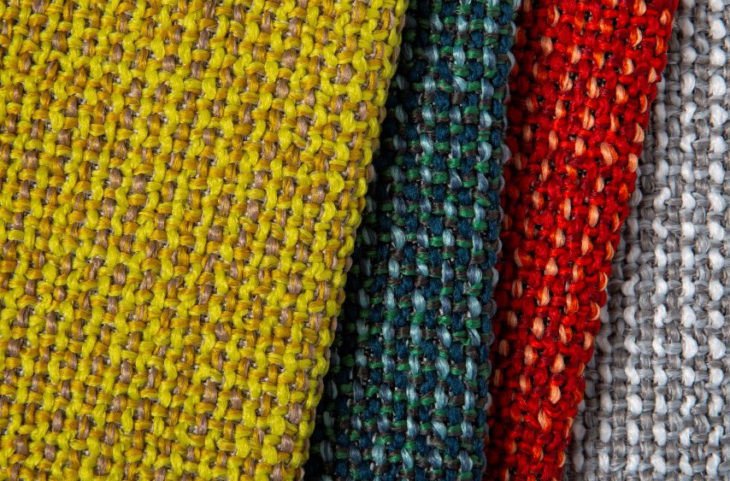Sustainable Manufacturing
No conversation about manufacturing today excludes sustainability. Manufacturing materials to be sustainable is no longer a business requirement, but a responsible choice towards the environment and the people. The way we see it, ‘sustainable’ is now phasing into an umbrella term that means more than just something that can be recycled or reused. Strict standards demand sustainability from an end-to-end perspective. From the source of the raw materials to the energy used in manufacturing, the amount of water and power consumed, to the carbon footprint created in transport and installation, sustainability now sits at a whole new level. Even post-manufacturing compliance is required – case in point, VOC emissions, and recyclability.
In case you missed it, we organised a great discussion on Material Transparency earlier this year where the experts talk about sustainability in materials and why it’s important to our health, our performance, and the future of our planet.
Top: LUUM; Above: Spradling
Ethical Practices
The conversation around ethics in manufacturing isn’t as wide and deep in the MENA region as it is in Europe and North America, but we’re getting there. What is ethics in manufacturing, you ask?
Sustainability and ethics are two sides of the same coin, that coin representing the issue of responsible manufacturing. While sustainable practices relate to the environmental impacts of materials, ethics offers a holistic approach that takes into consideration the people and communities involved in the production of those products. Health, safety and fair compensation for the people who work hard to produce the items we take for granted, are some of the considerations when producing or selling an ethical product.
You’ve probably seen the words ‘fair trade’ used frequently. Fair trade formed the start of ethics being incorporated into the process. Today, ethics has expanded to impact the environment and communities involved. Manufacturers are committed to ensuring transparency in these processes. For example, producers of natural materials, such as stone or marble, have implemented strict policies that prevent the use of child labour in the mining or production of their products. Several certifications also push for transparency and are, in fact, closely related to the sustainable aspects of materials. Take the OEKO-TEX® standard as one example, which ensures that no toxic materials are used to manufacture children’s clothing.
Durable and Self Healing
One demanding feature of materials today is the ability to resist damage up to moderate levels – from smudges and scratches, to stain repellent and visible tears. The driver behind it is mostly from a maintenance and cost perspective, but it drives the sustainable aspects too. You’d be amazed at the research going into that space.
FENIX® is a great example of materials at the forefront of innovation. Designed by Arpa Industriale in 2013, Fenix is a smart material built as a surface for a range of interior applications, including kitchens, hospitality, healthcare, transportation, bathrooms and furniture. Aesthetic beauty aside, its uniqueness comes from its wide range of tremendous characteristics that include thermal repairability, anti-fingerprint, soft to touch, hygienic, durable and waterproof.
Self healing materials are also showing promise of finding their way into specification sheets. A product way ahead of its time is self-healing concrete, created by microbiologist Hendrick M. Jonkers. As the name suggests, it is concrete with the uncanny ability to heal itself to some extent, made possible through bacteria that repair the concrete much like the way tissues repair themselves after a fracture. Mind… blown…
Antimicrobial
To be fair, surfaces with antimicrobial qualities were discovered close to over a century ago. However, we’re only just beginning to explore their full potential and apply the same science to other materials as well.
Possibly one of the first documented antimicrobial elements is copper. In fact, scientists are willing to bet on copper alloys as a defense against the spread of infectious diseases in today’s world. The alloys contain ions that are both antiviral and antibacterial, and able to kill over 99.9% of bacteria within two hours. Silver is another option but requires moisture to activate its antimicrobial properties, making copper far more effective.
That same science is being used in fabrics today. The older approach to designing antimicrobial fabrics was to treat them with a material that ensures microbes don’t grow within their fibrous layers. Today, manufacturers and material scientists are working to infuse fabrics with zinc and copper oxides, or silver ions that have been proven effective in destroying bacteria and viruses.
Above left: Cosentino; Above Right: FENIX
Intelligent Materials
This is where it gets interesting. Superhero comic books and movies have been filling our heads with dreams of materials that can become invisible or adapt to environmental changes. While we might not be there yet, we’re definitely making progress. There’s a significant demand for intelligent materials that are performance-driven and specific to the needs of an industry or environment. Sports and athletics were already major stakeholders, with materials designed to ensure athletes perform at their peak. That, however, was just the beginning.
Temperature regulating fibres are being developed for use cases that require protection against temperature variations. Intelligent temperature-regulating fibres that are coated with phase change material by microcapsule PCM technology can sense temperature changes, and adjust accordingly. Putting it simply, it keeps your body at a comfortable temperature no matter the outside climate.
Electric smart glass is another impressive technology that is able to change opaqueness levels in an instant. Its applications are wide and are now being produced with energy-efficient and cost-saving methods that are driving its popularity.
In an interview for the Oerlikon, Professor Dr. Thomas Lamke states that one of the requirements for modern materials is that with their use, the performance density of the component can be increased. “With increasingly complex geometries and great cost pressure, the load profile also becomes more challenging. ‘Light’ and ‘manufacturable’ are only two necessary, but by no means sufficient, requirements, even if they are the most important.”
In other words, the future is dense.







